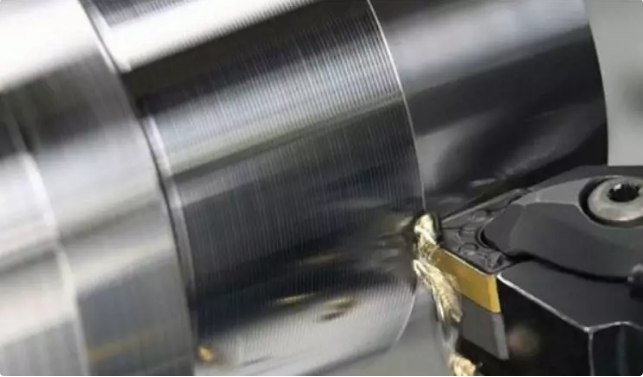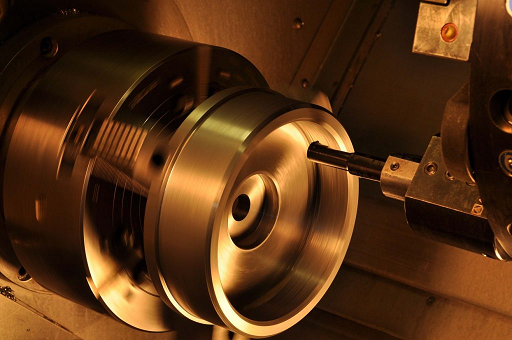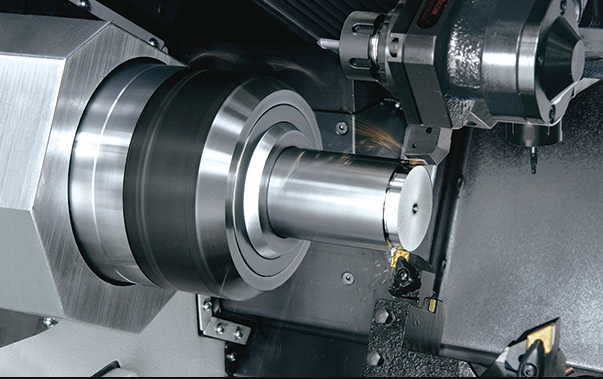One article to rapidly understand CNC turning process and tooling
The processing technology of CNC lathes is similar to that of ordinary lathes, but because CNC lathes are one-time clamping and continuous and automatic processing to complete all turning processes, the following aspects should be noted.
1. Reasonably choose the cutting amount in CNC turning process
For high-efficiency metal cutting processing, the processed material, cutting tools, and cutting conditions are the three major elements. These determine the processing time, tool life, and processing quality. The economical and effective machining method must be a reasonable choice of cutting conditions.
The three elements of cutting conditions: cutting speed, feed, and depth of cut directly cause tool damage. With the increase of cutting speed, the temperature of the tooltip will rise, which will cause mechanical, chemical, and thermal wear. Cutting speed increased by 20%, tool life will be reduced by 1/2.
The relationship between the feed condition and the wear on the back of the tool occurs in a very small range. But the feed rate is large, the cutting temperature rises, and the back wear is large. It has less influence on the tool than cutting speed. Although the impact of cutting depth on the tool is not as large as the cutting speed and feed rate, when cutting at a small depth of cut, the material being cut will produce a hardened layer, which will also affect the life of the tool.
The user should choose the cutting speed to be used according to the processed material, hardness, cutting state, material type, feed rate, depth of cut, etc.
The most suitable processing conditions are selected on the basis of these factors. Regular, stable wear, and longevity are the ideal conditions.
However, in actual operations, the choice of tool life is related to tool wear, dimensional changes to be processed, surface quality, cutting noise, and processing heat. When determining the processing conditions, it is necessary to conduct research according to the actual situation. For difficult-to-process materials such as stainless steel and heat-resistant alloys, coolants or blades with good rigidity can be used.

2. Choose a tool reasonably in CNC turning process
1) When rough turning, choose a tool with high strength and good durability to meet the requirements of large back-grabbing and large feed when rough turning.
2) When finishing turning, choose high-precision and durable tools to ensure the requirements of machining accuracy.
3) In order to reduce the tool change time and facilitate tool setting, machine clamped knives and machine clamped blades should be used as much as possible.
3. Reasonable selection of fixtures in CNC turning process
1) Try to use general fixtures to clamp the workpiece, avoid using special fixtures;
2) The part positioning datum coincides to reduce positioning error.

4. Determine the processing route in CNC turning process
The processing route is the movement track and direction of the tool relative to the part during the processing of the index control machine tool.
1) It should be able to guarantee the processing accuracy and surface roughness requirements;
2) The processing route should be shortened as much as possible to reduce the tool idle travel time.
5. The connection between processing route and processing allowance in CNC turning process
At present, under the condition that the CNC lathe has not yet reached the popular use, the excess margin on the blank, especially the margin containing the forging and casting hard skin layer, should be arranged on the ordinary lathe for processing. If you must use a CNC lathe to process, you need to pay attention to the flexible arrangement of the program.

6. Main points of fixture installation in CNC turning process
At present, the connection between the hydraulic chuck and the hydraulic clamping cylinder is realized by a tie rod. The main points of hydraulic chuck clamping are as follows: First, use a moving hand to remove the nut on the hydraulic cylinder, remove the pull tube, and pull it out from the back of the spindle. Use a moving hand to remove the chuck fixing screw to remove the chuck.


